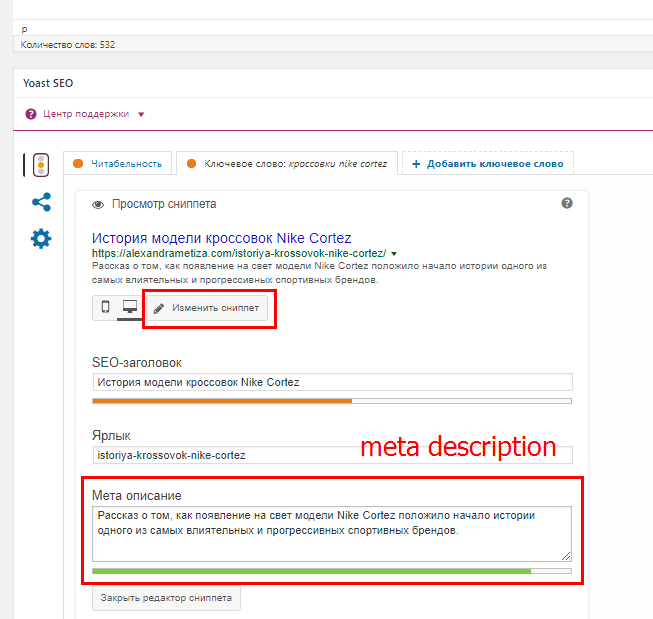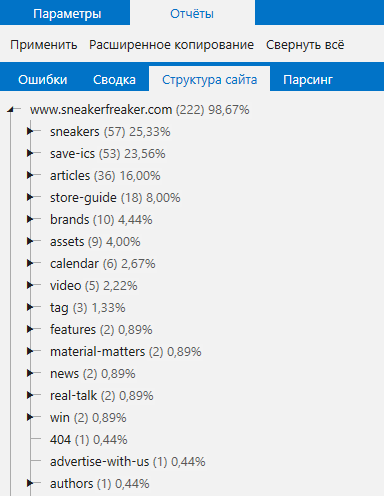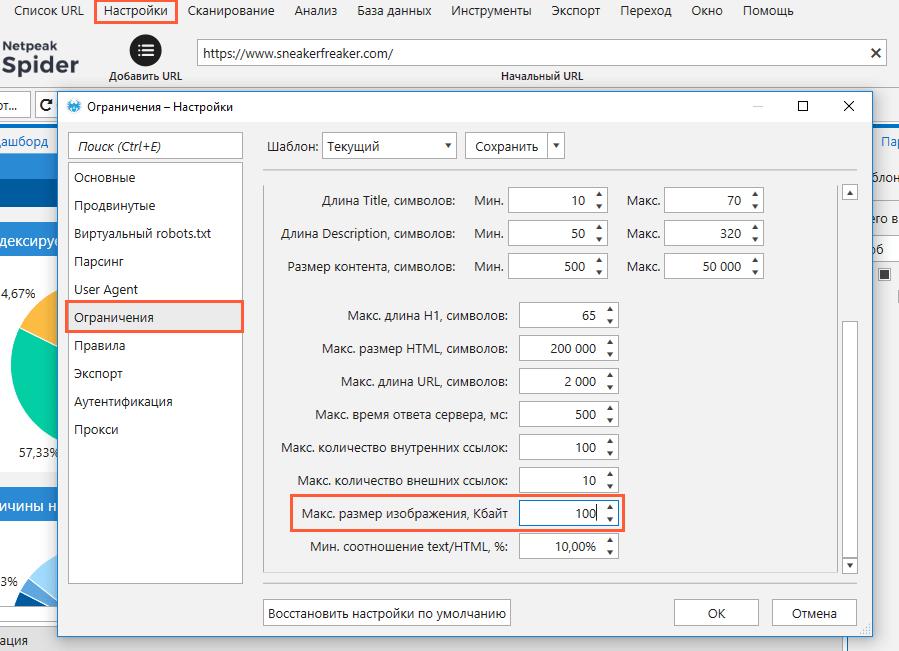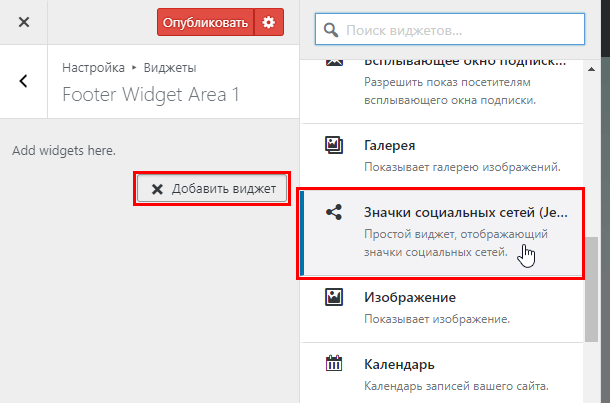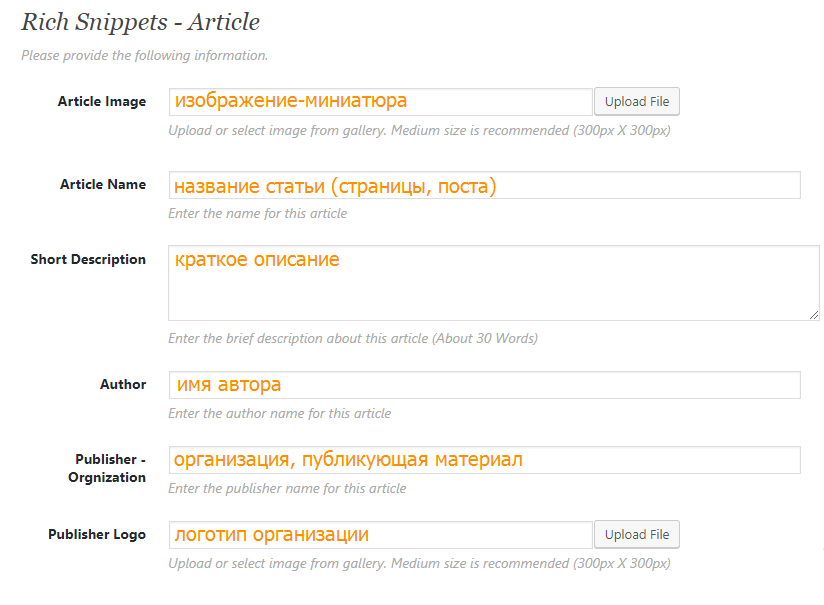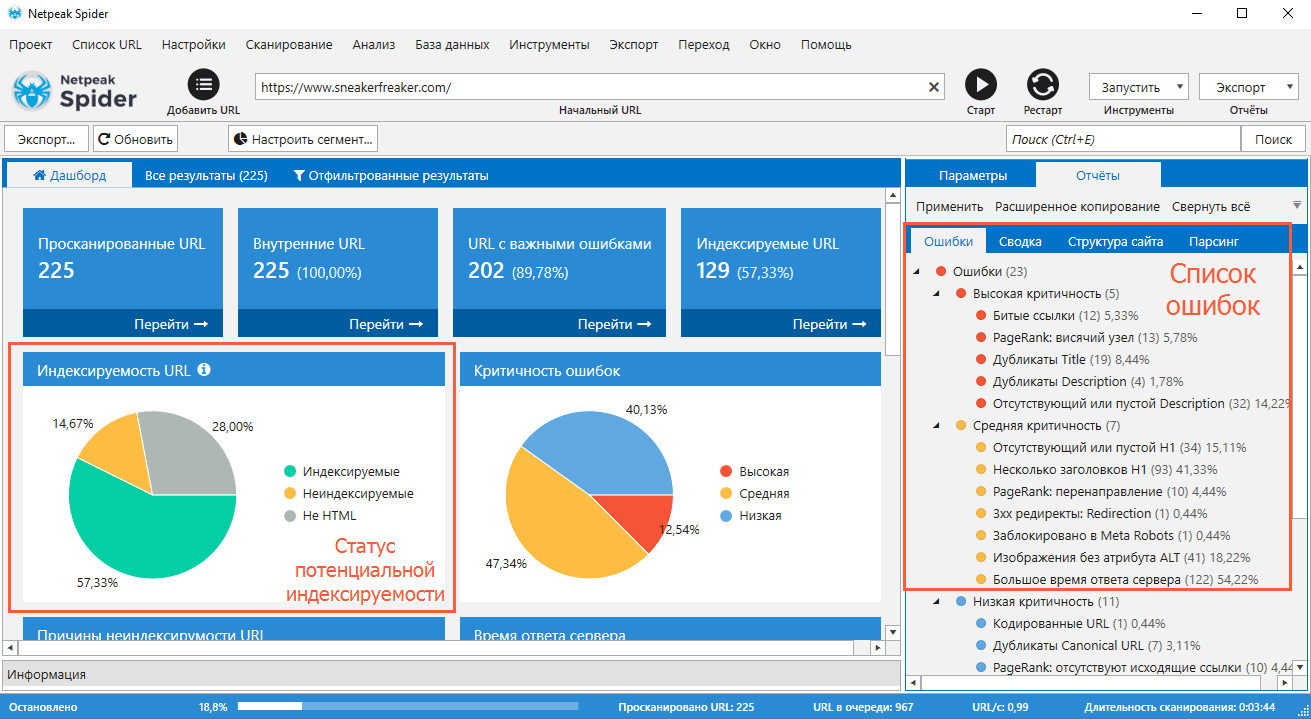10 аспектов технического SEO, которые нужно знать владельцам блогов на WordPress
- 1 1. Безопасное соединение нужно настроить уже сегодня
- 2 2. Весь контент требует оптимизации
- 3 3. Чёткая структура сайта и внешний вид ссылок — это больше чем прихоть
- 4 4. Сделать сайт максимально быстрым — ваш священный долг
- 5 5. Подключения к панелям для вебмастеров и системам аналитики не избежать никому
- 6 6. Когда речь идёт об изображениях, размер имеет значение
- 7 7. Лайки и рейтинги интересуют не только пользователей
- 8 8. Микроразметка как способ сделать ваш сайт привлекательным в органике
- 9 9. Не дайте роботам заблудиться — создайте карту сайта
- 10 10. Ошибки могут появиться там, где вы их не ждёте
- 11 Коротко о главном
Каждый блогер, который отважился на создание собственного сайта на базе WordPress, рано или поздно сталкивается с вопросом привлечения новых читателей на сайт. Один из наиболее целесообразных способов — продвижение сайта в органическом поиске, которое начинается с технической оптимизации. Чтобы избавить вас от страха перед неведомым миром SEO, мы подготовили список из 10 ключевых аспектов технического SEO, которым должен уделить внимание каждый владелец сайта на WordPress.
1. Безопасное соединение нужно настроить уже сегодня
Настройка безопасного соединения предполагает переезд на HTTPS-протокол вместо HTTP, который для всех сайтов изначально используется по умолчанию. Процедура не занимает много времени, но включает в себя довольно много шагов. Чем раньше вы подключите SSL-сертификат на своём сайте, тем меньше хлопот вам принесёт переезд. К тому же, с каждым годом HTTPS-протокол приобретает всё большее значение с точки зрения поисковой оптимизации.
Переезд можно доверить веб-разработчику, либо же осуществить самостоятельно. Процедура займёт у вас не более часа и не потребует каких-либо денежных затрат: для блога смело можно использовать бесплатный сертификат. Подробнее о подключении сертификата Let’s Encrypt и настройки HTTPS с его помощью вы можете узнать из статьи цикла WordPress SEO в блоге Netpeak Software.
2. Весь контент требует оптимизации
Даже если вы крайне ревностно относитесь соблюдению качества своего контента, для успешного продвижения сайта в поиске этого не будет достаточно. Дело в том, что у поисковых систем есть ряд критериев, в соответствии с которыми они ежедневно оценивают миллионы страниц. Согласно требованиям поисковиков, в оптимизации нуждаются:
- Текстовое содержимое.
Контент должен быть полезным и содержать исключительно органические и соответствующие общему смыслу ключевые слова. Рекомендуемый объём — от 500 символов. - Структура.
Идеальная структура текста предполагает использование одного заголовка H1, нескольких уместных заголовков второго и третьего порядков (H2 и H3), а также маркированных и нумерованных списков. Все элементы должны использоваться для улучшения читабельности текста. - Метатег Title.
Title должен быть кратким, ёмким и уникальным. Он должен отражать суть страницы и состоять не менее чем из 10 и не более чем из 65-70 символов. На сайте может быть только один Title. - Метатег Description.
Содержимое Description подчиняется тем же правилам, что и Title. Отличается лишь размер: минимальный составляет 50, максимальный — 320 символов. Но не забывайте о том, что Google зачастую урезает текст в сниппетах, так что видимыми окажутся лишь две трети составленного вами описания. - Используемый медиаконтент.
Контент должен состоять не только из текста: для улучшения восприятия он должен быть разбавлен изображениями, анимацией и видео. Изображения в свою очередь должны размещаться с атрибутом ALT, где будет в двух словах описана суть картинки.
Для оптимизации контента в WordPress вам понадобится всего два инструмента — универсальный SEO-плагин (Yoast SEO или All in One SEO Pack) и краулер для проверки на ошибки (Netpeak Spider).
Базовый SEO-плагин позволяет вам прописать все необходимые метаданные, оптимизировать их и увидеть, как указанный Title и Description будут выглядеть на компьютере и мобильном устройстве.
Краулер же определит все ошибки на сайте, связанные с оптимизацией контента. Непосредственно Netpeak Spider может указать вам на следующие проблемы:
- Слишком длинный или слишком короткий Description / Title.
- Дубликаты Title / Description.
- Дубликаты текста.
- Несколько Title / Description на одной странице.
- Отсутствующий или пустой Title / Description.
- Битые изображения.
- Изображения без атрибута ALT.
- Отсутствующий или пустой H1.
- Несколько заголовков H1.
- Дубликаты H1.
- Слишком длинный H1.
- Слишком маленький или слишком большой объём текста.
3. Чёткая структура сайта и внешний вид ссылок — это больше чем прихоть
Продуманная структура сайта и адресов внутри него — не только проявление заботы об удобстве пользователей, но и долгосрочная инвестиция в улучшение поисковой оптимизации сайта. Что означают эти понятия на деле? Продуманная структура предполагает, что вид связей между страницами сайта напоминает дерево с ответвлениями, например, по категориям или тегам. Все они последовательны и логически вытекают одна из другой.
Аналогичная ситуация должна прослеживаться и в URL-адресах. Если сайт насчитывает огромное количество страниц и разделов, адреса должны отражать взаимосвязь между контентом и его рубрикой. Это поможет пользователям сориентироваться, а поисковым роботам — составить целостную картину сайта и оценить релевантность страницы.
При разработке структуры сайта и построении URL-адресов вам следует придерживаться всего нескольких основных рекомендаций:
- Изначально продумывайте все страницы, которые должны присутствовать на вашем сайте, а также последовательность перехода на каждую из них.
- Выстраивайте связь между страницами таким образом, чтобы пользователь мог добраться до любого материала на сайте за 2-4 клика.
- Давайте страницам и категориям соответствующие по смыслу названия. Разделяйте слова с помощью дефисов.
- Настройте внешний вид ссылок в разделе «Настройки» → «Постоянные ссылки». Выберите вариант, при котором адреса страниц будут прописаны словами. Будьте осторожны с вариантами в духе website.com/category/post-name: если у вас есть публикации, которые одновременно относятся к разным категориям, то они будут доступны по нескольким разным ссылкам. Это повлечёт за собой появление полных дублей на сайте.
- Используйте транслитерацию, чтобы в именах страниц фигурировала исключительно латиница. В этом вам поможет плагин Cyr-to-Lat.
4. Сделать сайт максимально быстрым — ваш священный долг
Скорость работы сайта имеет непосредственное отношение к тому, насколько хорошо сайт воспринимается и пользователями, и поисковыми системами. Следовательно, вы как владелец сайта должны сделать всё возможное для повышения скорости ответа сервера и скорости загрузки контента. Вы можете повлиять на эти показатели следующим путём:
- Отключите и удалите все лишние плагины.
Они создают дополнительную нагрузку и замедляют процесс загрузки сайта из-за количества дополнительных инструментов, работающих одновременно. - Воспользуйтесь плагином для кэширования.
Это может быть WP Super Cache и W3 Total Cache, например. - В настройках сайта отключите генерацию дополнительных миниатюр для картинок разных размеров.
- Оптимизируйте изображения (подробнее об этом — в параграфе 6).
- Смените хостинг-провайдера.
Если сервер не справляется с нагрузкой и отвечает на запросы слишком медленно, возможно, пришло время выбирать либо новый тариф с высокопроизводительным оборудованием, либо нового поставщика услуг.
Оценить, насколько критична ситуация в отношении скорости загрузки, можно двумя путями:
- При помощи Google PageSpeed Insights. Сервис оценивает скорость загрузки конкретной страницы по ряду показателей и даёт свою оценку по 100-балльной шкале.
- При помощи Netpeak Spider. Программа анализирует для каждой страницы сайта время ответа сервера и время загрузки контента.
5. Подключения к панелям для вебмастеров и системам аналитики не избежать никому
Если вы планируете начать работу над поисковой оптимизацией, то вам наверняка будет интересно отслеживать результаты своих стараний и получать достоверную информацию из «первых рук», а именно — от поисковых систем. Исходя из этого, вам в обязательном порядке необходимо зарегистрировать сайт в панелях для вебмастеров Google и Яндекс, а также в аналитических системах соответствующих поисковых систем.
Регистрация в панелях для вебмастеров позволяет вам отслеживать статус индексации страниц, а также получать информацию о проблемах, которые поисковые роботы обнаруживают во время очередного обхода сайта.
Регистрация в сервисах для аналитики предоставляет вам развёрнутую информацию о том, кто, когда и откуда приходит на ваш сайт, а также на каких страницах посетители задерживаются больше всего. На основании этих данных вы можете формировать стратегию продвижения своего контента и выбирать, какие каналы использовать в дальнейшем.
Все вышеупомянутые сервисы доступны абсолютно бесплатно.
6. Когда речь идёт об изображениях, размер имеет значение
Наверняка вы не раз сталкивались с ситуациями, когда текст на странице уже успел появиться, а картинка продолжает загружаться ещё 30 секунд, если не больше. Звучит не так уж страшно, но на деле ожидание оказывается мучительно долгим, особенно если просматривать сайт с мобильного девайса.
Надо сказать, раздражает это не только вас: поисковые системы также обращают внимание на то, как быстро на сайтах загружаются изображения. С точки зрения оптимизации идеальный размер картинки составляет не более 100 Кбайт.
Чтобы хоть немного приблизить изображения на своём сайте к идеалу, вам следует придерживаться следующих рекомендаций:
- Определите минимальные габариты картинок, при которых ваш сайт будет хорошо смотреться на абсолютном большинстве устройств — как на компьютерах, так и на мобильных девайсах разных размеров. Приводите картинки к указанным габаритам перед загрузкой: так вы уменьшите их физический размер, снизите нагрузку на сайт и ускорите загрузку контента.
- Сжимайте изображения перед загрузкой на сайт. Лучше всего для этого подходят сервисы типа TinyPNG, которые сжимают изображения без ощутимой потери качества.
- Если на сайте уже имеется множество изображений, которые вы не хотите заменять, установите и активируйте один из специальных плагинов. Это может быть, например, reSmush.it или Compress JPEG & PNG images от разработчиков упомянутого выше TinyPNG. Они оба позволяют оптимизировать уже имеющиеся на сайте картинки.
Также рекомендуем включить проверку размера изображений в программу регулярного технического аудита сайта. Вы можете использовать для этого упомянутый выше Netpeak Spider.
Для запуска анализа изображений вам нужно лишь ввести адрес сайта в строку «Начальный URL» и обязательно отметить пункт «Изображения» в списке параметров на боковой панели. После завершения сканирования в отчёте по ошибкам вы увидите, есть ли на сайте картинки, размер которых превышает рекомендуемые 100 Кбайт.
Кстати, если вы на практике убедились, что оптимальный для вашего сайта размер составляет, например, 250 Кбайт, вы можете указать его в разделе «Настройки» → «Ограничения». С такой настройкой программа будет обращать ваше внимание только на те картинки, которые превышают установленный вами лимит.
7. Лайки и рейтинги интересуют не только пользователей
Пользовательская активность внутри сайта не влияет на ранжирование вашего сайта напрямую. Однако системы пользовательских рейтингов и комментариев, кнопки для лайков и шейров, а также любой другой функционал для вовлечения посетителей могут положительно повлиять на продвижение вашего сайта. Есть ряд причин, почему важно дать пользователям возможность взаимодействовать с вашим контентом:
- Дополнительное взаимодействие может задержать пользователя на странице, снизив таким образом показатель отказов.
- Рейтинги в виде звёздочек являются элементом микроразметки, который учитывается поисковыми системами. К тому же, звёздочки выводятся в сниппете страницы при грамотном составлении структурированных данных и позволяют привлечь дополнительное внимание.

- Кнопки шейров в социальных сетях повышают шанс того, что пользователь поделится заинтересовавшей его статьёй или новостью в своём профиле социальных сетей Facebook, Вконтакте, Одноклассники и др. Каждая из них может стать для вас существенным источником дополнительного реферального трафика.
Чтобы настроить рейтинговую микроразметку, воспользуйтесь плагином Schema Review. А для добавления большинства популярных социальных кнопок и виджетов вам будет достаточно плагина Jetpack.
8. Микроразметка как способ сделать ваш сайт привлекательным в органике
Как уже было сказано выше, микроразметка позволяет сделать более привлекательными сниппеты вашего сайта в органической выдаче. Так как продвижение в органике — это бесконечная битва за внимание пользователя, то микроразметку можно считать одним из ключевых орудий в этой борьбе. Именно благодаря ей в сниппете будут показываться не только Title, Description и адрес страницы, но и масса других дополнительных элементов: навигационная цепочка, номер телефона, цена, рейтинг, имя автора публикации и многое другое.
Для внедрения микроразметки существует множество автоматизированных решений. Среди них — плагины Schema Pro (лучшее решение, за которое, увы, придётся платить), WP Review (есть платная и бесплатная версии) и All In One Schema Rich Snippets (целиком бесплатный, но не самый удобный плагин). Функционал и юзабилити каждого из плагинов существенно различаются.
9. Не дайте роботам заблудиться — создайте карту сайта
Карта сайта служит своеобразным средством навигации для поисковых роботов. Она представляет собой файл в формате XML, в котором прописаны адреса страниц сайта, которые поисковикам следует индексировать.
Она помогает показать роботам полный перечень имеющихся на сайте страниц, что особенно важно для крупных или часто обновляющихся сайтов. Также в карте сайта можно указать разного рода дополнительную информацию, например, время последнего изменения страницы.
Карты сайта можно создать при помощи специализированных плагинов для WordPress, онлайн-сервисов и специального встроенного инструмента Netpeak Spider. Подробную инструкцию вы можете найти в статье на блоге WebPromo Experts, посвящённой картам сайта.
10. Ошибки могут появиться там, где вы их не ждёте
Единоразовая грамотная настройка сайта не является гарантией того, что в будущем на сайте не появится никаких ошибок. Они могут возникать даже не по вашей вине.
Чтобы избежать негативных последствий каких-либо внутренних ошибок сайта, регулярно проводите технический аудит сайта. Он поможет выявить и своевременно устранить все ключевые проблемы, связанные с индексируемостью сайта, метаданными, редиректами, дублированием контента и многими другими аспектами технической оптимизации.
Проще всего выполнять проверку с десктопным краулером, например, с Netpeak Spider. Программа способна анализировать более 50 параметров и определять порядка 60 ошибок, две трети которых имеют среднюю и высокую критичность. К тому же, на панели «Дашборд» значительная часть наиболее важной информации будет представлена в виде наглядных кликабельных диаграмм.
Перед запуском глобального аудита сайта выберите количество потоков сканирования и определитесь с набором анализируемых параметров. Как правило, варианта по умолчанию оказывается вполне достаточно.
Коротко о главном
Блоги на WordPress, как и любые другие сайты, нуждаются в технической оптимизации. И даже не будучи специалистом по техническому SEO, вы должны позаботиться о нескольких основных его аспектах. Мы собрали их в небольшой список, который может послужить чеклистом для любого новоиспечённого владельца сайта на WordPress:
- Настройка безопасного соединения.
- Оптимизация всего контента на сайте.
- Построение грамотной структуры сайта и URL-адресов.
- Максимальное повышение скорости работы сайта.
- Подключение к панелям для вебмастеров и системам поисковой аналитики.
- Оптимизация изображений.
- Построение механики вовлечения пользователей.
- Внедрение микроразметки.
- Создание XML-карты сайта.
- Регулярное проведение внутреннего аудита и последующее устранение ошибок.
А с чего началось ваше знакомство с WordPress? Допускали ли вы какие-то серьёзные ошибки в оптимизации сайта, и если да, то каким образом устраняли их? Поделитесь своим опытом в комментариях: возможно, именно в эту самую минуту кто-то из наших читателей вот-вот совершит ошибку, которую ваш совет поможет предотвратить 🙂
Об авторе: Александра Метиза, контент-маркетолог Netpeak Software. В маркетинге с 2014 года. Специалист по PR, SMM и внешнему контент-маркетингу.


